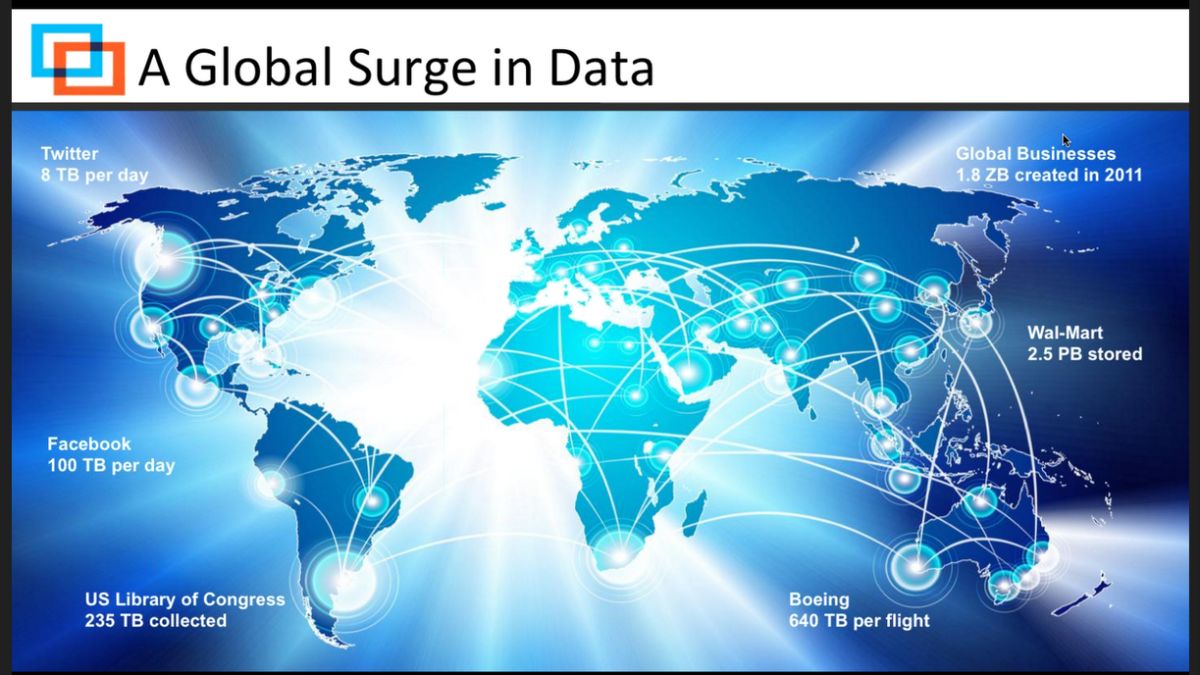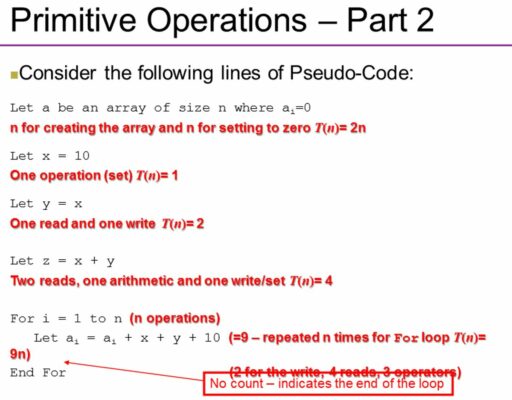Table of Contents
In the age of information, primary data stands as a beacon of untapped potential for organizations seeking to gain a competitive edge. By harnessing this raw data, businesses can unlock breakthrough insights that drive innovation and strategic decision-making. The following article delves into the transformative power of primary data when leveraged through advanced tools and methodologies, particularly in the realm of competitive intelligence, patent analytics, and customer relationship management.
Key Takeaways
- Integrate AI to revolutionize competitive intelligence, transforming qualitative insights into quantitative data for strategic actions.
- Develop a robust data model framework to capture and utilize competitive intelligence effectively across various business functions.
- Utilize patent data analytics to map innovation landscapes and unlock the potential of human ingenuity for future advancements.
- Adopt ethical practices in intelligence collection and optimize CRM fields to translate data into actionable business insights.
- Explore cross-industry applications of data-driven insights to improve win rates and revenue generation through competitive data.
The AI Revolution in Competitive Intelligence


Integrating AI Tools for Enhanced Market Analysis
The integration of AI tools in market analysis is revolutionizing the way businesses understand and engage with their competitive landscapes. AI’s ability to process vast datasets has become a critical tool in predicting market dynamics, offering insights that are both timely and accurate.
By leveraging AI, companies can now map out their competition more effectively, identifying key players and categorizing them with unprecedented precision. This intelligence modeling with AI not only enhances the accuracy of analyses but also provides a more granular view of market trends and competitor strategies.
The synergy between human analytical prowess and AI computational efficiency is critical to overcoming challenges in data reliability and enabling the development of practical, actionable insights.
However, it’s essential to balance AI integration with human expertise. While AI excels at processing data, it requires the guidance of CI professionals to interpret the underlying value of that data. This collaboration ensures that the insights generated are not only data-driven but also contextually relevant and strategically sound.
Transforming Employee Insights into Quantitative Data
In the quest to gain a competitive edge, companies are increasingly looking to their own employees for insights. The challenge lies in converting the rich, qualitative data from employee observations into quantifiable metrics that can inform strategic decisions. This transformation is facilitated by AI, which can sift through various sources such as emails, Slack, Teams, and CRMs like Salesforce or HubSpot, to extract and analyze valuable intel.
By leveraging AI, businesses can ensure that high-quality intel is not only captured but also efficiently analyzed, allowing for the growth of a true competitive advantage.
A structured approach is essential for this process. Below is a simplified data model framework that outlines the steps for converting employee-generated intel into actionable data:
- Define the competitive intelligence desired from employees.
- Simplify the process to ensure consistent and relevant intel collection.
- Apply AI tools to detect patterns and anomalies in the data.
- Use generative AI to summarize insights for dissemination to employees and leadership.
Leveraging Generative AI for Summarizing Actionable Insights
The integration of generative AI into the competitive intelligence landscape marks a transformative shift in how organizations process and utilize employee-generated data. By transforming qualitative insights into quantitative data, AI tools enable a more nuanced understanding of market dynamics.
In this era of information overload, the ability to distill vast amounts of data into concise, actionable insights is invaluable. Generative AI stands at the forefront of this capability, offering a competitive edge to those who harness it effectively.
The following table outlines the key takeaways from leveraging generative AI for competitive intelligence:
| Key Takeaways | Description |
|---|---|
| Data Model Framework | Establishing a structure for the competitive intel desired from employees. |
| Quality of Intel | Ensuring the relevance and accuracy of employee-generated insights. |
| Pattern Detection | Utilizing AI to identify trends and anomalies in the data. |
| Insight Summarization | Employing generative AI to distill insights into a digestible format for stakeholders. |
By prioritizing the improvement of customer experience through these AI-driven strategies, product managers can effectively prioritize their customers and stay ahead in the market.
Strategies for Effective Primary Data Utilization


Creating a Data Model Framework for Competitive Intelligence
In the fast-paced world of competitive intelligence, creating a robust data model framework is essential. This framework serves as the backbone for defining the type of competitive intel desired from various sources, particularly employees. It simplifies the process, ensuring that the intel gathered is relevant and consistent.
- Define key competitive metrics
- Identify data sources (e.g., CRM, emails, meetings)
- Establish data collection protocols
- Integrate AI for pattern detection
By transforming qualitative insights into quantitative data, organizations can detect competitive patterns and anomalies more effectively. This not only streamlines the analysis process but also enhances the strategic decision-making capabilities.
The application of AI to employee-generated intel is a game-changer. It allows for the detection of subtle trends and provides a deeper understanding of the competitive landscape. Leveraging generative AI to summarize these insights ensures that they are not only actionable but also easily shareable across the organization.
Ensuring Quality and Relevance of Employee-Generated Intel
In the realm of competitive intelligence, the quality and relevance of employee-generated intel are paramount. Employees often possess unique insights that are scattered across various communication platforms such as email, Slack, and CRMs like Salesforce or HubSpot. However, these valuable pieces of intel can be lost in the noise of daily operations.
To harness this intel effectively, a structured approach is necessary. Here are some key takeaways for ensuring the quality and relevance of employee-generated intel:
- A data model framework for defining the competitive intel you want from employees.
- Strategies for simplifying and ensuring employees are sharing the right competitive intel, every time.
- Applying AI to detect competitive patterns and anomalies in employee-generated intel.
- Leveraging generative AI to summarize actionable insights for distribution to employees and leadership.
By integrating AI tools, we can transform qualitative employee insights into actionable, quantitative data, identifying trends that offer deeper insights.
The challenge lies in integrating these insights into the competitive analysis in a way that is both efficient and effective. AI tools are now being used not only to summarize and analyze public intel but also to elevate the intel from employees, turning it into a strategic asset for growth.
Applying AI to Detect Patterns and Anomalies in Data
The integration of AI in data analysis has revolutionized the way businesses approach competitive intelligence. Predictive analytics and machine learning models are now essential tools for uncovering hidden patterns and detecting anomalies in vast datasets. These advanced algorithms can sift through complex data, identifying trends that would be imperceptible to human analysts.
By leveraging AI, organizations can transform their data into a strategic asset. For instance, AI can enhance customer data integration, crucial for projects that forecast customer behavior. This not only aids in anticipating market shifts but also in tailoring business strategies to meet evolving demands.
The synergy between AI and human insight is pivotal in translating raw data into actionable intelligence.
The table below illustrates the impact of AI tools on data analysis:
| AI Tool | Function | Impact |
|---|---|---|
| Predictive Analytics | Forecasting Trends | Market Readiness |
| Data Visualization | Simplifying Insights | Decision Support |
| NLP & Sentiment Analysis | Understanding Context | Customer Engagement |
In the context of competitive intelligence, these tools facilitate a more nuanced understanding of the market, enabling businesses to stay ahead of the curve.
Innovation Through Patent Data Analytics


Exploring the Multifaceted Benefits of Patent Data
Patent data analytics transcends traditional patent searching, offering a comprehensive view of the innovation landscape. It is a key tool for economic growth and competitive intelligence. By analyzing patent-related information, organizations can gain insights into R&D activities, market positioning, and potential collaboration opportunities.
- Innovation Mapping: Visualizing the geographic distribution of innovation and identifying collaboration networks.
- Competitive Intelligence: Understanding competitors’ strategies and market dynamics.
Patent data analytics is not just about searching for patents; it’s about unlocking the potential of human ingenuity.
As we embrace the digital age, the convergence of technology and law through patent data analytics opens doors to opportunities that fuel economic prosperity and societal advancement.
Mapping Innovation Hubs and Collaboration Networks
The landscape of innovation is dotted with hubs that serve as beacons of technological advancement and collaboration. Mapping these hubs is essential to understanding the flow of ideas and the dynamics of industry partnerships. By visualizing the geographic distribution of these centers of excellence, businesses can pinpoint where cutting-edge research is taking place and identify potential collaborators.
The creation of a growing and sustainable network of Digital Innovation Hubs (DIHs) across Europe exemplifies the power of collaboration. These hubs offer SMEs unprecedented opportunities to tap into the latest technologies and knowledge pools.
Innovation hubs are not just physical locations; they are also virtual platforms where ideas converge and synergize. The following table illustrates the multifaceted benefits of patent data in fostering these collaborative environments:
| Benefit | Description |
|---|---|
| Knowledge Uncovery | Comprehensive patent searches reveal hidden insights. |
| Cross-disciplinary Collaboration | Identifying relevant patents encourages knowledge sharing. |
| Breakthrough Inspiration | Synthesizing insights from patents sparks innovation. |
By leveraging patent data analytics, organizations can accelerate innovation, enhance legal strategies, and drive economic growth. The strategic partnerships and licensing agreements facilitated by this data not only foster technology transfer but also attract investments and stimulate knowledge diffusion.
Unlocking Human Ingenuity for Future Advancements
The digital age has ushered us into an era where inexpensive processing capabilities are set to ignite an explosion of machine intelligence applications. This surge in computational power, coupled with the insights gleaned from patent data analytics, is pivotal in unlocking human ingenuity. By analyzing patent data, organizations can tap into a wellspring of knowledge, fostering innovation and resilience against digital disruption.
- Uncover hidden gems of knowledge
- Foster cross-disciplinary collaboration
- Inspire novel ideas and breakthroughs
The synthesis of existing patents and technological developments is not just about innovation; it’s about propelling humanity into a realm of endless possibilities.
As we embrace the transformative potential of patent data, we also unlock access to a diverse talent pool, brimming with untapped potential. This convergence of AI and human intelligence is crucial for competitive intelligence, envisioning future landscapes, and utilizing collective intelligence to foster responsibility and innovation in businesses.
Ethical Intelligence Collection and CRM Optimization


Best Practices for CRM Competitive Intelligence Fields
In the realm of competitive intelligence (CI), Customer Relationship Management (CRM) systems are invaluable for gathering and analyzing data. To unlock their full potential, certain best practices should be adhered to. Firstly, it’s crucial to create CRM CI fields that are optimized for insightful data analysis. This involves identifying key fields that can capture essential competitive information from various sources, including social media, competitor websites, and direct customer interactions.
Ensuring the ethical collection of intelligence is paramount. It’s not just about what data you collect, but how you collect it. Ethical practices protect both the company’s reputation and customer trust.
Another vital aspect is maintaining clean CRM data. This means reinforcing the importance of using required fields and regularly purging irrelevant or outdated information. Clean data is the cornerstone of effective analysis and the translation of findings into actionable insights. Lastly, it’s essential to understand how to leverage compete data to influence win rates and increase revenue generation, turning CI into a strategic asset for the company.
Maintaining Ethical Standards in Data Collection
In the pursuit of competitive intelligence, the ethical collection of data is paramount. Ensuring compliance with privacy laws and regulations is not just a legal obligation but a cornerstone of consumer trust. High-quality data is the lifeblood of meaningful insights, yet it must be gathered with integrity and respect for individual rights.
- Data Privacy and Security: Safeguarding sensitive information is essential.
- Bias and Interpretation: Critical evaluation is necessary to avoid misinterpretation.
- Accessibility and Affordability: Equitable access to data must be a priority.
The ethical use of AI and data analytics will play a crucial role in shaping a future where data can be utilized responsibly.
Organizations must commit to continuous improvement in data practices, fostering transparency and correcting any inaccuracies promptly. By doing so, they not only adhere to ethical standards but also enhance the value of their data assets.
Translating CRM Data into Actionable Business Insights
The crux of competitive intelligence lies in the ability to transform Customer Relationship Management (CRM) data into strategic actions that drive business growth. Data transformation is a pivotal step, involving the cleansing, validation, and standardization of data to ensure its accuracy and utility for analysis.
- Data Aggregation: Collect and unify data from various sources to create a comprehensive view of customer interactions.
- Data Transformation: Cleanse, validate, and format data to maintain its relevance and readiness for strategic application.
- Insight Application: Apply tailored insights to new opportunities, enhancing sales success and customer retention strategies.
By integrating predictive analytics and AI tools, businesses can unlock the potential of CRM data, identifying high-value leads and optimizing customer engagement strategies. This approach not only streamlines the sales process but also creates a cycle of continuous learning and improvement.
The table below illustrates how CRM data can be leveraged to influence key business outcomes:
| CRM Data Utilization | Outcome |
|---|---|
| Lead Scoring with Predictive Analytics | Optimized Revenue Strategies |
| Customer Churn Analysis | Proactive Retention Efforts |
| Customer Winback Initiatives | Increased Re-engagement |
| Upsell & Cross-Sell Opportunities | Guided Offer Strategies |
Harnessing CRM data effectively means moving beyond mere collection and storage. It’s about transforming this data into a strategic asset that informs decision-making and propels the business forward.
Cross-Industry Applications of Data-Driven Insights


Case Study: Location Intelligence in a Fragmented Market
The geospatial software market is characterized by a vast array of competitors, each bringing unique offerings to the table. This diversity presents a significant challenge for companies like Esri, which must navigate through a fragmented landscape to maintain a competitive edge. By leveraging advanced AI, Esri has been able to transform its competitive intelligence (CI) processes, resulting in more accurate and timely market analyses.
The strategic group mapping, powered by machine learning techniques such as K-means clustering, has been instrumental in providing actionable insights. It clusters competitors based on competitive similarity, which is crucial not only for understanding the current market but also for anticipating potential future shifts.
In a case study involving the nightlife app Slyde, the application of unsupervised machine learning techniques revealed patterns and anomalies that were not immediately apparent. This enabled Slyde to execute a competitive strategy that was both informed and effective. The session highlighted the importance of differentiated intelligence and showcased how generative AI can expedite the intelligence process.
Adapting Methodologies Across Different Sectors
The versatility of data-driven methodologies is evident when they are adapted across different sectors, each with unique challenges and opportunities. The ‘Cyborg Approach’, combining AI and human insight, is revolutionizing market research by providing forward-looking insights and fostering a collaborative learning environment.
- Gather and analyze social media data
- Create actionable intelligence
- Drive strategic decision-making
This approach is not confined to a single industry but is applicable universally, from healthcare to retail. By leveraging tools like NLP and sentiment analysis, organizations can unlock surprising data trends and tailor their strategies to meet the evolving demands of their respective markets.
The session will culminate in a practical demonstration, where AI and human teams will compete in developing analyses. This exercise will not only showcase the efficiency of AI but also highlight its limitations, ensuring a balanced perspective on its application.
Influencing Win Rates and Revenue Generation with Compete Data
In the quest to outperform competitors, companies must leverage compete data to influence win rates and boost revenue generation. This involves a deep dive into the reasons behind customer wins and losses, a task that many organizations struggle with due to a lack of appropriate data, tools, and processes. GenAI, an advanced artificial intelligence platform, emerges as a solution to this challenge, enabling businesses to collect, process, and interpret win-loss data effectively.
By integrating GenAI with existing sales processes, companies can democratize access to win-loss insights, ensuring that this valuable information is not siloed but shared across the organization.
The following table outlines key applications of compete data:
| Application | Description |
|---|---|
| Campaign Optimization | Enhance user activity understanding for better campaigns. |
| Lead Scoring | Utilize predictive analytics to identify high-converting leads. |
| Customer Churn | Proactively retain customers to prevent churn. |
| Customer Winback | Drive re-engagement and personalize offers efficiently. |
| Upsell & Cross-Sell | Predict purchasing interests to guide offers. |
To maximize the impact of these insights, it is crucial to execute a competitive strategy within the sales team, using AI and CI tools in conjunction with tailored worksheets and templates. The ability to analyze data and translate findings into actionable insights can significantly influence win rates and drive revenue growth.
Conclusion
In the quest to unlock the full potential of primary data for breakthrough insights, we have explored the transformative power of AI, the importance of competitive intelligence (CI), and the innovative strategies for data-driven decision-making. From the insights of industry experts like Tammy Savage and Mohit Bhakuni to the practical takeaways from workshops and sessions, it’s clear that harnessing primary data is not just about collecting information—it’s about creating a synergy between human ingenuity and technological advancement. As we integrate AI-enhanced tools, ethical intelligence collection, and robust data models, we pave the way for actionable strategies that can disrupt markets and elevate competitive positioning. The future beckons us to leverage this synergy for innovation, inclusivity, and prosperity, transforming data into a strategic asset that propels us forward into a realm of endless possibilities.
Frequently Asked Questions
How can AI enhance the process of competitive intelligence (CI)?
AI can disrupt traditional CI by providing earlier, more data-driven insights. It enhances tools for market analysis, helps build data models to understand the value of underlying data, and assists in summarizing and analyzing public intel for actionable strategies.
What role do data scientists play in competitive intelligence?
Data scientists collaborate with CI market experts to build and interpret data models, ensuring the data’s value is fully leveraged for competitive insights. Their expertise in data patterns and anomalies is crucial for transforming qualitative insights into quantitative data.
What are the key benefits of patent data analytics?
Patent data analytics provides insights into R&D activities, patent strategies, and market positioning. It enables innovation mapping, identifies collaboration networks, and unlocks human ingenuity for future advancements.
How does generative AI contribute to competitive intelligence?
Generative AI can summarize large volumes of data into actionable insights, speed up the intelligence process, and detect competitive patterns and anomalies in employee-generated intel.
What methodologies can be adapted across different sectors for data-driven insights?
Methodologies such as creating robust data models, analyzing social media data, and generating actionable intelligence can be adapted across sectors to drive strategic decision-making and increase market value.
How can CRM optimization impact business outcomes?
Optimizing CRM with competitive intelligence fields and ensuring ethical data collection can lead to insightful data analysis. This translates into actionable business insights, influencing win rates, and driving revenue generation.





